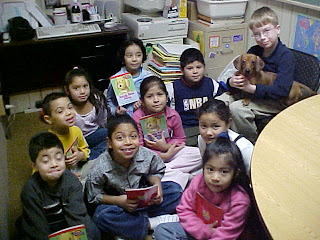I have had very limited experience teaching ESL students, so my suggestions are also limited. These are some random suggestions:
- Refer back to the textbooks and information learned in this class frequently.
- Connect with other ESL teachers- in person or on-line.
- Be an advocate for your students. There may be times where you or your room is their safe haven.
- Use visuals as much as possible.
- Keep a computer close by to Google words.
- Use technology.
- Use games.
- Read, read, read!
- Laugh and smile!
- If possible, take students with you on errands - to the office, library, clinic,etc.
- Be patient - you will see results.
- Enjoy and embrace the many magical moments you will experience working with ELL's!
References
Chamot, A. The calla handbook: Implementing the cognitive academic
language learning approach (2009).White Plains, NY: Pearson.
Boyle, O. & Peregoy, S. Reading, writing, and learning in Esl. Fifth Edition. (2008).
New York:Pearson.


